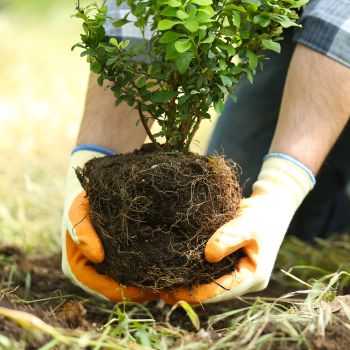The flowering peak of an ornamental garden is an impressive sight, but for many displays, it's an all too fleeting moment. After a week or two of beautiful blooms, the flowers start to fade as the plants shift their attention to setting seed.
While some plants such as honesty (Lunaria annua) are valued for their decorative seed pods, most varieties at this stage start to look decidedly tired and scruffy. But there's no need to wait until next year for a repeat performance. The flowering period of many plants can be extended by weeks or even months if you use a method known as deadheading.
What Is Deadheading?
Flowers might be most striking part of a plant's life, but from a botanical point of view the blooms are only one step in a larger process. The ultimate aim of any plant is to create seeds for the next generation. Flowers are simply a stepping stone toward that, attracting beneficial insects for pollination to make reproduction possible.
Once the flowers have done their job, they'll die back, and the plant's energies will be devoted to producing those all-important seeds. Deadheading is the technique of removing the flowers as they start to fade, but before viable seed has developed.
If the plant wants to pass its genetic information on to the next generation, it now has no choice but to go back to the drawing board and grow a new set of flowers. This extends the floral display as a happy side effect, keeping your flowerbeds looking better for longer.
Other Benefits of Deadheading
But the benefits of deadheading don't stop with an extended season. Many perennials won't re-bloom even after deadheading, but using the technique directs their post-flowering energy downward. Deadheading strengthens these plants' root systems for a more vigorous plant and a better display next year.
Similarly, some plants such as lavender start to sprawl and straggle after flowering. Deadheading these will help keep them in shape by prompting bushier regrowth.
And lastly, an exuberant cottage garden may be exactly what you're looking for. But if not, deadheading helps keep self-seeding plants under control so that they don't take over.
How to Deadhead Your Flowers
Pinching, pruning, and shearing are the three main methods of deadheading. Each one is suitable for different plants and situations.
The pinching method is best used for single flowers on a tender, well-defined stem. Simply squeeze the flower off the stem by pinching just above the top pair of healthy leaves. If there are no leaves below the flower, pinch out the entire stem where it branches off from its parent.
Pruning is the same basic method as pinching, but using secateurs or a blade to deal cleanly with tougher stalks. Again, either leave a pair of healthy leaves on the stem, or remove it entirely.
Shearing is a much more drastic method, suitable for bushy plants with large numbers of flowers on multiple stems. Using a pair of garden shears or heavy cutters, remove the whole flowering parts of the plant at the highest possible point on the stem, once again leaving a leaf pair behind if possible.
The danger with shearing is that you may also be removing undeveloped flower heads before they bud, wasting some of the flowering energy of the plant. It's better to shear on the side of caution, if necessary leaving some dead flowers behind to later pinch or prune individually.
Shearing is also suitable for a plant which is past the stage where careful deadheading is practical. If a plant has grown out of control and is full of browning blooms, hard shearing to remove about a third of the entire plant will help restore order. Most plants will quickly recover from this treatment if it isn't done too late in the season.
And lastly, deadheading individual flowers on plants such as lavender is too laborious for most people. Shearing or heavy pruning to give them a 'haircut' is much quicker, and will encourage bushier growth along with extending the flowering season.
When to Deadhead Flowers
Early and often is the key to successful deadheading. If you catch the flowers just as they're starting to fade, you'll stand the best chance of encouraging an impressive repeat performance.
However, for plants such as lupin which feature many small flowers on a single head, you need a balanced approach to timing. Prune off the entire spike once a majority of flowers have gone over, rather than waiting for the whole head to die off.
Frequent deadheading is important for three reasons:
- Tackling a few flowers a day is an easier task to keep up with, rather than saving the job up for a major session.
- Losing one or two flowers at a time is less traumatic for the plant compared to heavy shearing.
- Deadheading in stages will stagger flower regrowth for a longer, more balanced display.
Deadheading may seem like a time-consuming task when you're faced with a large, fast-fading flowerbed. Nonetheless, the rewards of a longer blooming season and neater, healthier plants make it one of the most worthwhile jobs in an ornamental garden.






